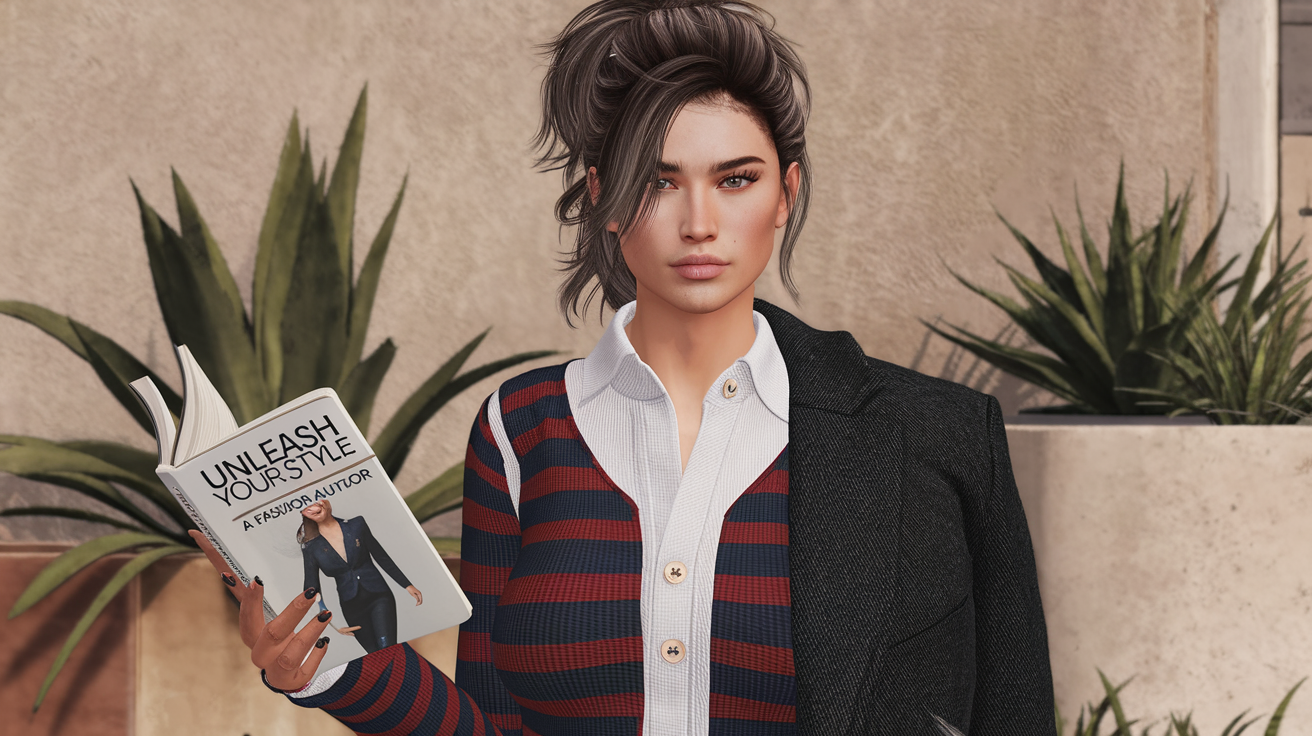Unleash Your Style: A Fashion Author's Guide to Publishing Your Book in 2025
Ever scrolled through Instagram or flipped through a glossy magazine, completely captivated by the art of fashion?Maybe you've got a burning desire to share your unique take on vintage styles, the latest trends, or even the business side of this dynamic industry. If you're sitting on a wealth of fashion knowledge or a compelling story, you're probably wondering, "How on earth do I get this into a book?" It's a question many aspiring fashion authors ask, and it's totally achievable, especially with the right tools and insights for 2025.
The fashion world is more than just clothes; it's about culture, history, creativity, and self-expression. Whether your passion lies in the intricate details of haute couture, the accessibility of streetwear, the evolution of sustainable fashion, or the biographies of iconic designers, there's a readership eager to dive into your world. Publishing your fashion book can be your ticket to becoming a recognized voice, sharing your expertise, or simply bringing your creative vision to life. But where do you even begin in this vibrant, fast-paced industry?
Let's be real, the journey from idea to published book can seem daunting. You've got the passion, you've got the ideas, but the actual writing, editing, and getting it out there?That's where things can get a little murky. But what if I told you it's more accessible than you think, and with a little guidance, your fashion masterpiece could be gracing bookshelves (both physical and digital) sooner than you imagined?This guide is designed to demystify the process, offering you practical steps and insights to make your fashion publishing dreams a reality this year.
Crafting Your Fashion Narrative: From Concept to Compelling Content

Before you even think about publishing, you need a solid concept. What's the core message or story you want to convey?Are you writing a "how-to" guide on building a capsule wardrobe, a deep dive into the history of a specific fashion era, or perhaps a biography of a groundbreaking stylist?Your niche is crucial. Think about what makes your perspective unique. What experiences, knowledge, or insights do you possess that others don't?Its about carving out your space in the already rich fashion literature landscape.
Once you have your core idea, its time to flesh it out. This involves creating a detailed outline. For fashion books, this might include chapters on influential designers, historical movements, specific garment types, styling techniques, or the business of fashion. Consider your target audience. Are you writing for budding designers, fashion students, vintage enthusiasts, or the everyday person looking to elevate their style?Knowing your audience will heavily influence your tone, language, and the depth of information you provide.
The actual writing process can be a marathon, not a sprint, especially if you're aiming for a substantial book. Don't be afraid to start small, perhaps with blog posts or essays, to get into the rhythm of writing consistently. What I've found incredibly helpful is to dedicate specific writing times and create a dedicated workspace, free from distractions. And remember, fashion is visual!Think about how you can incorporate compelling imagery, whether it's through descriptions that paint vivid pictures or by planning for photography if that's part of your vision.
Navigating the Visuals: The Art of Fashion Book Imagery

Fashion is an inherently visual medium, and your book should reflect that. If you're creating a book about specific fashion styles, historical periods, or designers, high-quality imagery is absolutely non-negotiable. This could include sourcing vintage photographs, commissioning original illustrations, or even staging your own photoshoots. The quality of your visuals directly impacts the perceived value and professionalism of your book, so don't skimp here. Think of images not just as decoration, but as integral parts of your narrative, helping to illustrate key points and evoke the essence of the fashion you're discussing.
When it comes to sourcing images, understanding copyright is vital. You'll need to ensure you have the legal right to use any photographs, illustrations, or artwork in your book. This might involve obtaining licenses, crediting artists properly, or using public domain materials. If you're working with photographers or illustrators, clear contracts outlining usage rights are essential. For a book on, say, Art & Photography related to fashion, this step becomes even more critical, as the visual elements are the primary content.
Planning your image placement early in the writing process is also a good idea. How will images complement your text?Will they be full-page spreads, smaller inserts, or part of a curated gallery?Consider the flow of your book and how visuals will guide the reader's eye. A well-designed layout with strategically placed images can transform a good book into a great one, making it a pleasure to read and behold.
The Publishing Pathways: From Self-Publishing to Traditional Routes
Honestly, so, youve got your words and your visuals ready. Now comes the big question: how do you get it published?You have a few main avenues to explore in 2025. I've noticed that self-publishing is more popular and accessible than ever. What's interesting is platforms like amazon kindle direct publishing (kdp), ingramspark, and apple books allow you to upload your manuscript and cover, set your price, and sell your book worldwide without needing a traditional publisher. This gives you complete creative control and a larger share of the royalties.
On the other hand, the traditional publishing route involves finding a literary agent who will then pitch your book to publishing houses. While this path can offer prestige, wider distribution, and professional editing and marketing support, it's also highly competitive and can take a significant amount of time. If your fashion book is a biography of a well-known figure or a extensive historical analysis with broad appeal, a traditional publisher might be a great fit. However, for more niche or experimental fashion topics, self-publishing often provides a faster and more direct route to your audience.
Another avenue to consider, especially if your book is instructional or a detailed guide, is to take advantage of your expertise through a Guide / How-to format. This could be anything from styling tips to DIY fashion projects. Regardless of the path you choose, thorough editing and proofreading are crucial steps. Don't underestimate the value of having fresh eyes on your work to catch errors and suggest improvements.
How FastRead Helps You Create Fashion Content
Truth is, creating quality content used to take forever. But FastRead changes the game entirely. Whether you're writing about fashion, technology, business, or any other topic, FastRead's AI handles the heavy lifting. Imagine needing to research the history of a specific fabric or the key figures in a fashion movement; FastRead can help you generate well-researched content outlines, draft chapters, and even suggest creative angles you might not have considered. It's like having a dedicated research assistant and writing partner rolled into one.
FastRead can significantly speed up the process of drafting your manuscript, allowing you to focus more on the creative and visual aspects that are so vital in fashion writing. You can use it to generate initial drafts for chapters, brainstorm chapter titles, or even get help with descriptive language to bring your fashion narratives to life. Plus, FastRead's AI can assist with structuring your book, ensuring a logical flow, whether you're writing a historical account, a practical guide, or a collection of essays.
Book Genres FastRead Supports
FastRead works with tons of different genres:
Fiction: Science Fiction, Fantasy, Romance, Thriller, Mystery, Historical Fiction, Horror, Supernatural, and many more. Non-Fiction: Art & Photography, Autobiography, Biography, Cookbook, Diary, Dictionary, Encyclopedia, Essays, and many more.
Polishing Your Masterpiece: Editing, Design, and Launching Your Fashion Book
Once your manuscript is drafted, the real magic of refinement begins. Editing is a multi-stage process. You'll want to start with developmental editing to improve the overall structure, content, and flow. Then, line editing will focus on sentence-level clarity and style. Finally, proofreading is essential for catching any lingering typos or grammatical errors. If youre self-publishing, youll be responsible for managing this process, either by hiring editors or diligently working through it yourself.
The cover design is your books first impression, and for a fashion book, it needs to be exceptional. It should visually communicate the genre, tone, and essence of your content. Investing in a professional cover designer who understands the fashion industry can make a huge difference. Likewise, the interior layout and typography should be appealing and easy to read, especially if your book includes images or design elements. Think about how designers approach a collection it's all about coherence and aesthetic appeal.
When it comes to launching your book, a well-thought-out marketing strategy is key. Build anticipation on social media, connect with fashion bloggers and influencers, and consider pre-order campaigns. Think about it: think about how you can take advantage of visual platforms like instagram and pinterest to showcase your book and it's content. Here's the thing: a strong online presence can help you reach your target audience directly and build a community around your work.
What's Your Next Step?
Turning your fashion insights into a published book is a rewarding journey. From defining your unique angle and crafting compelling narratives to curating stunning visuals and navigating the publishing landscape, each step is a chance to showcase your passion. Don't let the technicalities overwhelm you; focus on what you love the style, the stories, the creativity and find the tools that can support you in bringing it all together.
Ready to turn your ideas into a published book?FastRead can help you create professional content in hours, not months. With it's AI-powered capabilities, you can generate outlines, draft chapters, and even brainstorm ideas, freeing you up to focus on the creative heart of your fashion book. Give FastRead a try and start bringing your fashion vision to life today!